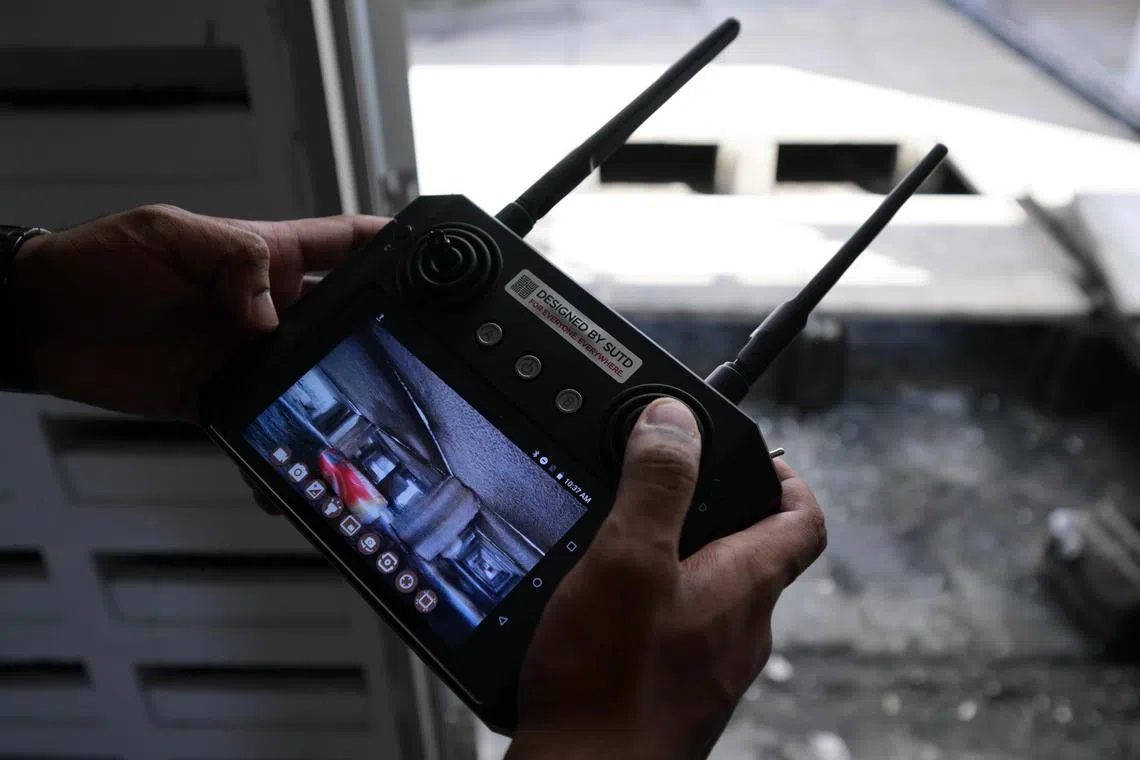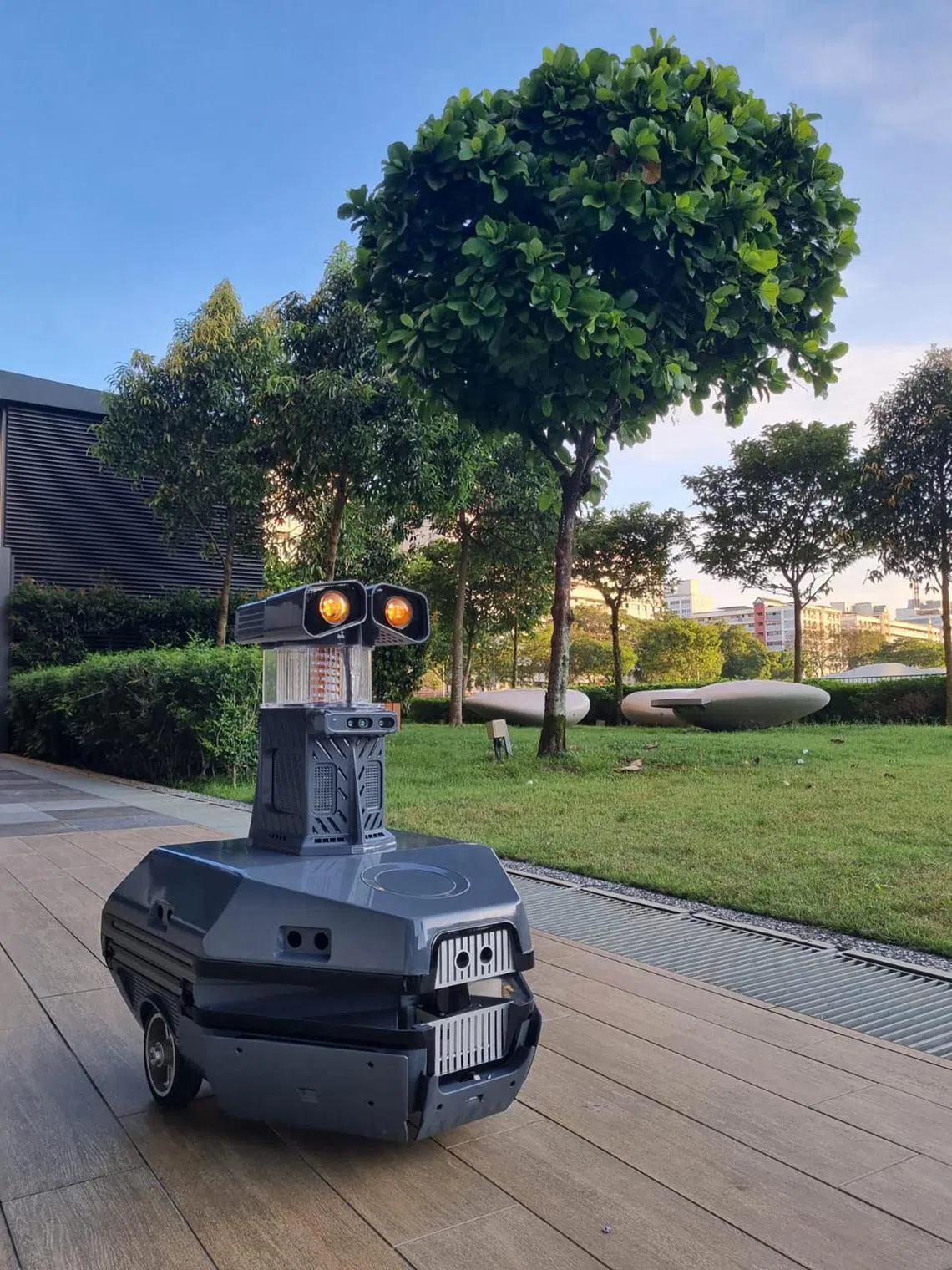SUTD robot curbs mosquito breeding; trials completed in Jalan Besar
Sign up now: Get ST's newsletters delivered to your inbox

The SUTD-developed robot, named Sable, can inspect hard-to-reach areas and dispense larvicide to help combat mosquito breeding.
ST PHOTO: NG SOR LUAN
Koh Ming Lun
Follow topic:
SINGAPORE – Rooftop and drain inspection to detect stagnant water to combat mosquito breeding has traditionally been laborious and could pose a safety risk.
Enter Sable, a shoebox shaped robot. Developed by researchers from Singapore University of Technology and Design (SUTD), Sable can get into tight and hard-to-reach spaces.
For instance, rooftop inspectors often have to lift heavy concrete slabs, which are often erected as secondary roofs, to access the tight space under the slabs. But because Sable can access the spaces under the slabs, inspectors do not need to lift them.
The robot is equipped with cameras to spot stagnant water, and a built-in dispenser allows maintenance staff to remotely apply larvicide when needed. It can be controlled remotely.
Jalan Besar Town Council has deployed Sable in the field since July following a successful trial, which could change how rooftop and drain inspection is carried out in housing estates in the future.
“The introduction of Sable has made inspections safer by enabling access to tight spaces and high-rise areas while providing detailed visual data,” said a spokesman for the town council.
The spokesman added that Jalan Besar Town Council will continue to assess how robotics can be applied to estate maintenance.
Associate Professor Mohan Rajesh Elara from SUTD said Sable can also be used to inspect roadside drains for clogging or for the management of pests in false ceilings
Inspection tasks, which typically require two or three people, would require only one worker with the robot, he said.

Workers are able to navigate Sable through a controller screen.
ST PHOTO: NG SOR LUAN
Kim Yew Integrated, a facilities management company, is planning to license Sable from SUTD.
Managing director Patrick Tan said the company also plans to lease Sable out, as well as another robot developed by SUTD called Dragonfly.
A roving mosquito trap, Dragonfly is designed to autonomously roam open spaces, such as schools and parks.
The droid-like robot uses ultraviolet light and releases chemical substances called pheromones to attract mosquitoes.

Dragonfly is an autonomous robot that uses layers of attractants to trap and kill mosquitoes.
PHOTO: SUTD
A suction fan at the neck of the droid sucks mosquitoes into a chamber, which has a glue trap. A camera in the trap chamber detects the number of mosquitoes captured.
Prof Mohan said traditional mosquito traps are static and human operators are needed to clear the traps.
“Dragonfly will improve productivity tremendously,” he said.


